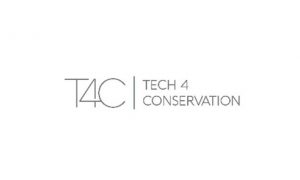Technical
Development
Team
The LINC project has been molded by on-the ground-use and feedback from the LINC partners. This input has been transformed by a diverse, talented development team into the LINC system. The teams have created a solution that balances the social and technical challenges of applied research and conservation to ensure the long-term sustainability of LINC.

Shihgian is a software engineer with over 15 years of experience developing enterprise applications that handle high-volume requests. He has incorporated smartness (Machine Learning) into new and existing applications to deliver business value effectively and efficiently. He is passionate about applying new technologies to solve complex real-world problems.
He joined the LINC team in 2021 and acts as technical lead and machine learning expert, using his knowledge and skills to coordinate the management of the technical systems and shape, improve, and execute LINC’s machine learning infrastructure and models.

Habiba is a software engineer with a strong affinity for machine learning and backend development, infrastructure orchestration, and MLOps. Habiba has honed her skills in developing scalable solutions and contributing to complex projects at various companies. Currently, Habiba contributes to developing the LINC platform’s main components—an intricate web application and machine learning models hosted on AWS.
Habiba joined in April 2022, drawn to the mission of Lion Guardians’ dedication to the conservation of lions and other wildlife in Africa. Habiba’s passion for problem-solving makes this role a rewarding and purpose-driven experience.

Thomas is a software engineer with a passion for bringing machine learning models into production. He has developed machine learning infrastructure to serve models across multiple industries including heavy equipment anomaly detection, healthcare, insurance, and home services. Thomas has experience in optimizing cloud infrastructure and collaborating with diverse teams to drive results.
He joined the LINC team in early 2023 and has worked to productionize machine learning models and improve the code deployment process.

Raphey is a software engineer specializing in machine learning and machine learning infrastructure. Prior to changing careers, he worked for more than a decade as a high school math and physics teacher.
He joined the LINC team in 2023 and looks forward to helping out with this valuable effort.

T4C is a Canadian non-profit focused on a single mission: to deliver and sustain value, in the form of innovative and effective technologies like machine learning, LoRaWAN, edge computing, and more, to conservationists and researchers working to save threatened and endangered species and their ecosystems.
T4C’s Maureen Reilly and Paul Kalil have been working with the LINC team since early 2021 and have been instrumental in moving LINC to a new level. They use their expertise to provide guidance for LINC, fostering productive connections and collaborations with conservationists and technical experts.
---------- Past Contributors ----------

Justin Downs is a co-founder of LINC, and before his passing, he acted as the platform’s Technical Director. He took our implausible idea to automatically use technology to identify lions’ whisker patterns and turned it into a ground-breaking open-source platform that allows researchers to work together to conserve African lions. We are carrying on the work we started with Justin many years ago and always carrying his memory. His hard work and dedication to technology that makes the world a better place will live on and grow, helping more lions, more species, and more conservationists around the globe.
In 2019 Tryolabs helped develop new Machine Learning algorithms for the LINC system, such as Siamese Neural Network approaches for facial recognition and whisker spot matching algorithms.
Tryolabs is a full-service machine learning consulting firm with over a decade of experience creating solutions based on state-of-the-art techniques in machine learning, computer vision, natural language processing, and predictive analytics.
Venidera supported the original development of LINC’s front-end UI interface. Venidera has deep experience developing AI and big data solutions for field monitoring and systems regulations for Brazil’s hydro-electrical power grid.
They applied this experience to the LINC project addressing the in-field optimization challenges of the intermittent and reduced bandwidth by creating store and forward designs and asynchronous serving. This has allowed the LINC system to deliver an easy-to-use UI for Artificial Intelligence tools employed in LINC.
Santosh Bhavani and Adam Gradski of Semantic MD were the first AI developers to work on LINC’s Machine Learning models. Both have deep experience in building and managing solutions in the AI field, from medical applications to automated farming and crop monitoring applications. They created multiple deep learning CNN-based solutions for individual lion IDs that ran and trained on constrained systems.


